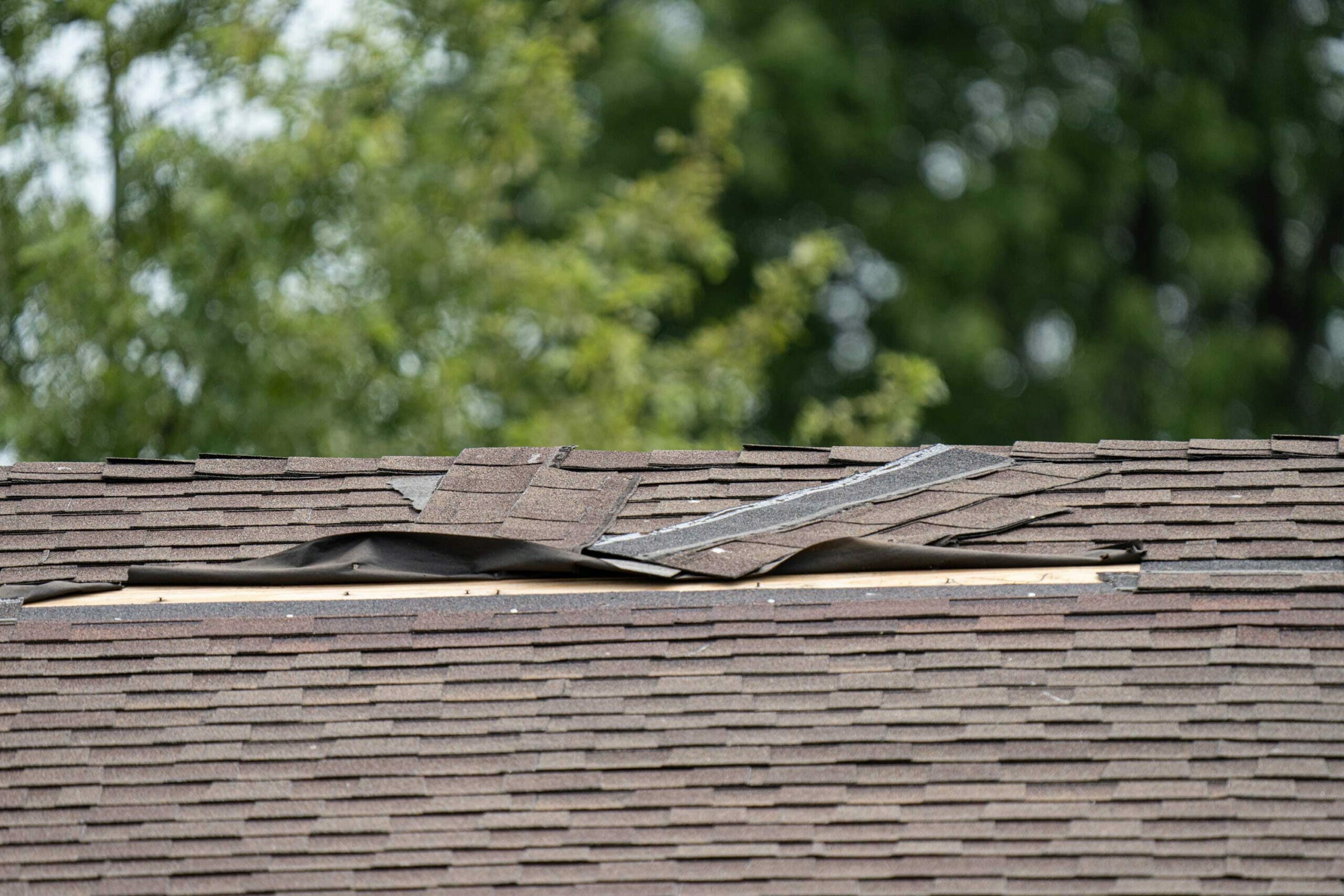Winter brings picturesque snowfall, cozy nights by the fire, and unfortunately, the potential for ice dams on your roof. While icicles hanging from the eaves may look charming, they can indicate a serious problem that leads to costly roof damage, leaks, and structural issues.
At Total Exteriors, we’ve seen firsthand how ice dams wreak havoc on homes. In this blog, we’ll break down what ice dams are, how they form, the risks they pose, and most importantly, how you can prevent and remove them before they cause significant damage.
What Are Ice Dams?
An ice dam is a ridge of ice that forms along the edges of a roof, preventing melted snow from draining properly. This trapped water backs up under shingles and can seep into the home, causing water damage to ceilings, walls, insulation, and even structural components.
How Do Ice Dams Form?
Ice dams are the result of a combination of snow accumulation, fluctuating temperatures, and poor attic insulation or ventilation. Here’s how it happens:
- Heat from the attic warms the roof – When a home has poor insulation or ventilation, warm air from inside the house rises and heats the roof’s surface.
- Snow melts and trickles down – The heated roof causes snow to melt, sending water down toward the colder eaves.
- Water refreezes at the eaves – Since the edges of the roof are cooler than the main surface, the melted water refreezes at the overhang, forming a thick ridge of ice.
- More melting snow backs up – As the cycle repeats, water gets trapped behind the ice dam, finding its way beneath shingles and into the home.
The Dangers of Ice Dams
Ice dams may seem like a minor winter nuisance, but they can cause significant and expensive damage, including:
🔹 Roof Leaks & Water Damage – Water backing up behind an ice dam can seep under shingles, leading to leaks that damage ceilings, walls, and insulation.
🔹 Mold & Mildew Growth – Excess moisture from leaks creates the perfect environment for mold and mildew, leading to health risks and expensive remediation.
🔹 Gutter & Roof Damage – The weight of an ice dam can tear off gutters, loosen shingles, and even cause structural roof damage over time.
🔹 Interior Damage – Persistent leaks from ice dams can ruin drywall, warp flooring, and even compromise electrical systems.
How to Prevent Ice Dams
Prevention is key when it comes to protecting your home from ice dams. Here’s what you can do to stop them before they start:
1. Improve Attic Insulation
A well-insulated attic keeps warm air inside your home, preventing the roof from heating up and melting snow prematurely. Proper insulation also helps maintain energy efficiency, keeping heating bills in check.
2. Ensure Proper Ventilation
Good attic ventilation allows cold air to circulate, keeping the roof’s surface at a consistent temperature. This helps prevent uneven melting and refreezing. Ridge vents, soffit vents, and attic fans can all contribute to better airflow.
3. Remove Snow from the Roof
Using a roof rake, gently remove excess snow from the roof, especially near the eaves. Clearing 3–4 feet of snow from the edges can help reduce ice dam formation.
4. Seal Air Leaks
Air leaks from chimneys, vents, and light fixtures allow warm air to escape into the attic. Sealing these leaks with caulk or weather stripping helps maintain a steady roof temperature.
5. Install Ice & Water Shield
When replacing a roof, consider adding an ice and water shield underlayment beneath the shingles. This waterproof barrier helps prevent leaks even if an ice dam forms.
How to Remove Ice Dams Safely
If an ice dam has already formed, it’s important to address it safely to prevent further damage:
✅ Use a Roof Rake – A long-handled roof rake allows you to remove snow without climbing on the roof. Avoid using shovels or metal tools that can damage shingles.
✅ Apply Calcium Chloride – If safe to do so, create channels in the ice dam by placing calcium chloride ice melt in a stocking or pantyhose and laying it across the ice. This helps melt a path for water to drain.
🚫 Avoid Using Salt – Rock salt can damage shingles, gutters, and landscaping. Stick to calcium chloride for a safer alternative.
🚫 Never Chip Away Ice – Using hammers, chisels, or axes to break up ice can cause significant roof damage and injury.
🚫 Avoid Climbing Onto a Snowy/Icy Roof – Walking on an icy roof is extremely dangerous. If the ice dam is severe, call a professional for safe removal.
When to Call a Professional
If ice dams are causing leaks or structural damage, or if you need a long-term solution to prevent them, it’s best to contact a roofing professional. Total Exteriors specializes in identifying problem areas and providing expert roofing solutions to protect your home year-round.
Protect Your Home from Ice Dams This Winter!
Ice dams can lead to costly repairs, but with proper prevention and maintenance, you can keep your roof and home safe from winter damage. If you’re concerned about ice dams or need professional assistance, contact Total Exteriors today for an inspection and expert solutions.
🔹 Call us at [Your Phone Number]
🔹 Visit [Your Website] for More Info
Stay warm, stay safe, and keep your roof ice-dam-free this winter! ❄️🏡





